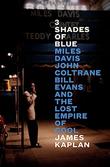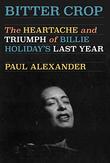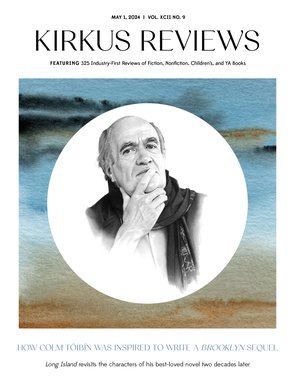Self-satisfied pundits have been declaring jazz dead since at least the 1970s. But extraordinary new artists keep coming along to prove the pundits wrong; just take the example of Samara Joy, who wowed critics and audiences with her debut album, Linger Awhile. Recorded when she was just 22, the album won legions of fans, many of them new to this musical art form, and Joy won the award for best new artist at the 2023 Grammys—proving that jazz was very much alive and kicking, thank you.
 The literature about jazz music and musicians is thriving, too, and 2024 has already brought a trio of excellent books on the subject. Out this month is Larry Tye’s The Jazzmen: How Duke Ellington, Louis Armstrong, and Count Basie Transformed America (Mariner Books, May 7), a Mount Rushmore–style monument to three of the genre’s greats—the “revolutionary American maestros…whose music throbs at the soul of twentieth century America,” as the author puts it in his preface. The Jazzmen seeks to complicate the received narratives about these household names, exploring their roots, music, collaborators, family life, experiences of race, and legacies. If Tye doesn’t quite upend our understandings of Ellington, Armstrong, and Basie, he offers, “in a single volume…fairly substantial biographies” that make for a “delightful read,” according to our review.
The literature about jazz music and musicians is thriving, too, and 2024 has already brought a trio of excellent books on the subject. Out this month is Larry Tye’s The Jazzmen: How Duke Ellington, Louis Armstrong, and Count Basie Transformed America (Mariner Books, May 7), a Mount Rushmore–style monument to three of the genre’s greats—the “revolutionary American maestros…whose music throbs at the soul of twentieth century America,” as the author puts it in his preface. The Jazzmen seeks to complicate the received narratives about these household names, exploring their roots, music, collaborators, family life, experiences of race, and legacies. If Tye doesn’t quite upend our understandings of Ellington, Armstrong, and Basie, he offers, “in a single volume…fairly substantial biographies” that make for a “delightful read,” according to our review.
 James Kaplan delivers another jazz triple portrait in 3 Shades of Blue: Miles Davis, John Coltrane, Bill Evans, and the Lost Empire of Cool (Penguin Press, March 5). If Ellington, Armstrong, and Basie forged jazz as a popular dance music beloved by the masses in the 1920s, ’30s, and ’40s, Kaplan’s subjects—especially Davis—presided over its transformation into “something else, jazz as art music, as listening music.” At the heart of 3 Shades is the making Kind of Blue, recorded in March and April 1959 by Davis, Coltrane, and Evans, along with Cannonball Adderley, Paul Chambers, and Jimmy Cobb; Kaplan calls it an album whose “quiet and enigmatic majesty…both epitomizes jazz and transcends the genre.” In a starred review, our critic calls the book a “marvelous must-read for jazz fans and anyone interested in this dynamic period of American music.”
James Kaplan delivers another jazz triple portrait in 3 Shades of Blue: Miles Davis, John Coltrane, Bill Evans, and the Lost Empire of Cool (Penguin Press, March 5). If Ellington, Armstrong, and Basie forged jazz as a popular dance music beloved by the masses in the 1920s, ’30s, and ’40s, Kaplan’s subjects—especially Davis—presided over its transformation into “something else, jazz as art music, as listening music.” At the heart of 3 Shades is the making Kind of Blue, recorded in March and April 1959 by Davis, Coltrane, and Evans, along with Cannonball Adderley, Paul Chambers, and Jimmy Cobb; Kaplan calls it an album whose “quiet and enigmatic majesty…both epitomizes jazz and transcends the genre.” In a starred review, our critic calls the book a “marvelous must-read for jazz fans and anyone interested in this dynamic period of American music.”
 Where are the women? If Tye and Kaplan train the spotlight on male changemakers, Paul Alexander offers a close-up of one indisputable female genius in Bitter Crop: The Heartache and Triumph of Billie Holiday’s Last Year (Knopf, Feb. 13). (Full disclosure: I’ve edited some of Alexander’s journalism in the past.) Holiday has been the subject of many books, including her own 1958 autobiography, Lady Sings the Blues, which played fast and loose with the facts; Alexander writes that Holiday “thoroughly embraced the adage that the truth should never stand in the way of a good story.” He uses the lens of the singer’s final year—which coincided, as it happens, with the recording of Kind of Blue—to revisit her life story, one of transcendent artistic expression in the face of entrenched American racism and crippling health struggles. “An extraordinarily fascinating book,” says our starred review.
Where are the women? If Tye and Kaplan train the spotlight on male changemakers, Paul Alexander offers a close-up of one indisputable female genius in Bitter Crop: The Heartache and Triumph of Billie Holiday’s Last Year (Knopf, Feb. 13). (Full disclosure: I’ve edited some of Alexander’s journalism in the past.) Holiday has been the subject of many books, including her own 1958 autobiography, Lady Sings the Blues, which played fast and loose with the facts; Alexander writes that Holiday “thoroughly embraced the adage that the truth should never stand in the way of a good story.” He uses the lens of the singer’s final year—which coincided, as it happens, with the recording of Kind of Blue—to revisit her life story, one of transcendent artistic expression in the face of entrenched American racism and crippling health struggles. “An extraordinarily fascinating book,” says our starred review.
Tom Beer is the editor-in-chief.
AVOVE, FROM LEFT: Count Basie (Bettmann/Getty Images), John Coltrane (Michael Ochs Archives/Getty Images), Duke Ellington (Bettmann/Getty Images), Billie Holiday (Michael Ochs Archives/Getty Images.), Miles Davis (Gilles Petard/Redferns), Bill Evans (PoPsie Randolph/Michael Ochs Archives/Getty Images), Louis Armstrong (Jazz Archive/Getty Images)









































